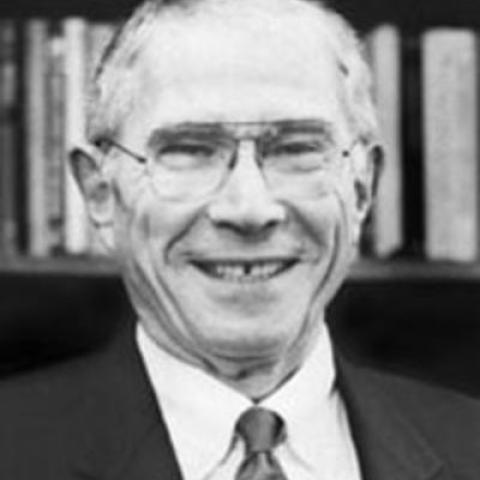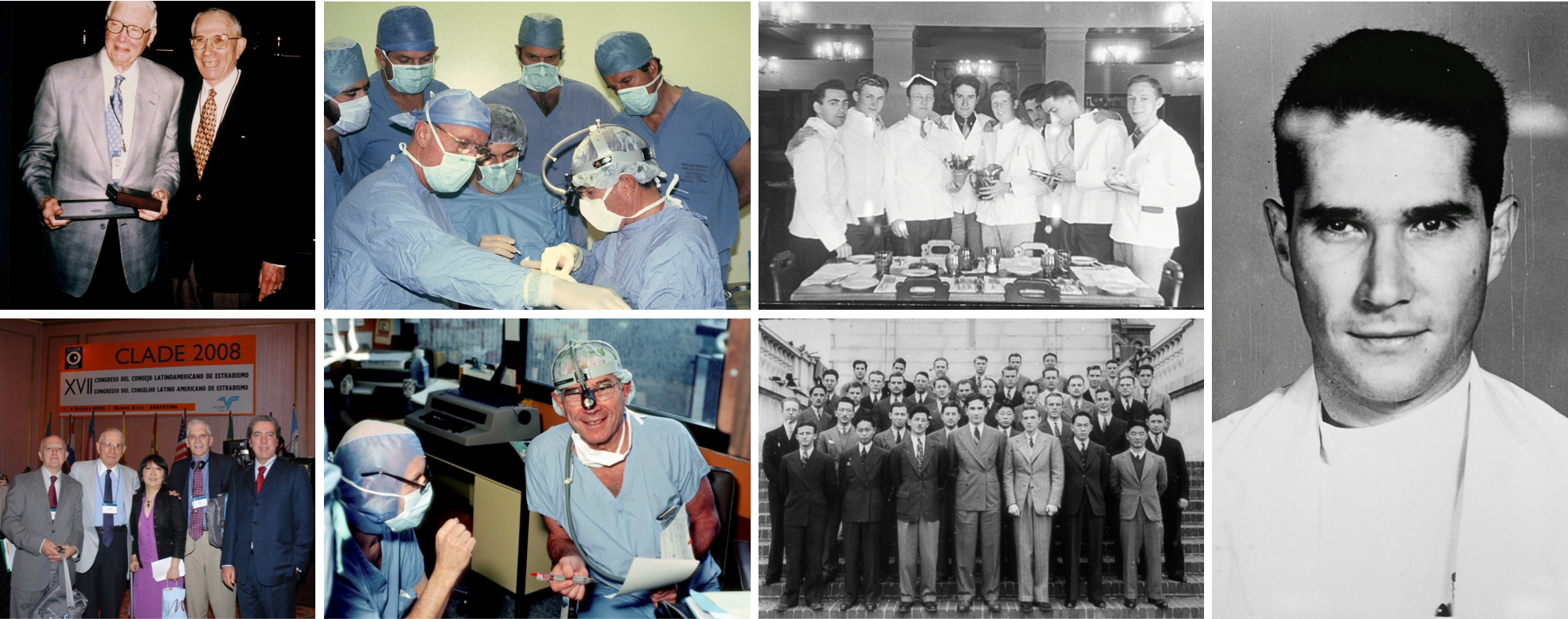
With great sorrow, we announce that our beloved Founder Dr. Arthur Jampolsky passed away peacefully in his sleep on March 19, 2021.

Art was born in North Dakota, on April 24, 1919. Brought up in Long Beach, California, he entered the University of California Berkeley at age 17, and was graduated from their School of Optometry in 1940. He then entered Stanford University School of Medicine, graduating in 1943 with his M.D. degree. After internship, he immediately volunteered for active duty in the Army Medical Corps, as WWII was raging. After boot camp, he was assigned to the Philippines for active duty in the Pacific Theater. After the armistice, he was appointed as ophthalmologist in the General MacArthur’s headquarters in the Daiichi building in Tokyo before returning home.
Art then completed a residency in ophthalmology at Stanford, after which he continued his career development via a series of self-financed fellowships in selected eye centers in the United States, London, Paris, and Sweden (including the Karolinska Institute in Stockholm). He returned to London to enroll in orthoptics sections and residency programs under Keith Lyle, M.D. He developed a particular and enthusiastic interest in learning and collaborating with Latin American centers of strabismus, which he helped develop to a remarkable degree of comradeship, continuing for the rest of his life.
After additional studies at the Karolinska Institute, Art returned to San Francisco and went into practice as an office colleague of the Stanford Eye Department Chief, Dr. Hans Barkan. He learned an immense amount of office patient interaction from Barkan, who also supported and facilitated his intention to devote half time to laboratory work and half-time to clinical work, a formula that continued for several decades. His laboratory work was supported by the Office of Naval Research, and followed closely the electromyographic teachings of the Karolinska Institute researchers, founding, along with Elwin Marg and Edward Tamler, the first western EMG laboratory. When Stanford moved its medical school to Palo Alto, Art and others remained behind to form what is now California Pacific Medical Center (CPMC), currently part of the Sutter Health network. Art became head of the Eye Department, setting it on course to become the respected program it is today.
In 1963, he founded the independent, world-renowned Smith-Kettlewell Eye Research Institute, based on the principle of clinical and laboratory scientists collaborating on research in strabismus, binocular vision and vision rehabilitation. A clinical fellowship program was also instituted, training over a hundred ophthalmologists from around the world in strabismus. Beginning in 1978, reunion meetings of its graduates, the Jampolsky Fellows group, have been held yearly at various locations around the world, with its members considered by Art as his proudest legacy.
Having early on become an acknowledged world leader in strabismus, Art participated in the founding of the American Association for Pediatric Ophthalmology and Strabismus (AAPOS), and was particularly noted as the person who put the “S” in AAPOS. He also later founded its Low Vision Committee, and was recently honored by its establishment of the biannual Jampolsky Lecture.
In order to satisfy an unmet need for stick-on spectacle prisms for strabismus patients, Art also founded a company, Optical Sciences Group, which soon became the principal manufacturer of Fresnel lenses in the United States. It was later bought by the industrial conglomerate 3M, with Art characteristically donating the proceeds to research.
In addition to his fame in strabismus, Art was extremely active in supporting the cause of blind and low vision rehabilitation, leading for a considerable period the Rehabilitation Engineering Research Center (RERC) at Smith-Kettlewell and instigating numerous innovations in this field. He also helped found several related organizations including the Blind Babies Foundation, and served on the board of the San Francisco Lighthouse for the Blind, as well as the Exploratorium in San Francisco.
On the national scene, Art was one of a small group of ophthalmologists who conceived and birthed the National Eye Institute (NEI), later serving on its prestigious National Advisory Eye Council, and using this position to promote strabismus and low vision research. He was also involved in the formative years of the National Research Council and the National Academy of Sciences committees relating to vision.
Naturally Art was the recipient of many prestigious awards throughout his life. These included, to name only a few: American Academy of Ophthalmology Award of Merit; American Academy of Ophthalmology Senior Honor Award; Claffy Medal (& lecture), Department of Ophthalmology, Univ. of Sydney, Australia, 1988; Association for Research in Vision Ophthalmology Mildred Weisenfeld Award for Excellence in Ophthalmology, 2002; a listing as "one of best ophthalmologists in America", Ophthalmology Times National Survey,1996; Philip M. Corboy Memorial Award (and Lecture) for Distinguished Service in Ophthalmology, Hawaiian Eye Foundation, Maui, HI, 2003; Lucien Howe Medal, The American Ophthalmological Society, 2004. He was also inducted into the Berkeley Optometry Hall of Fame.
For his contributions to blindness and low vision rehabilitation, he was awarded the Lions Humanitarian Award for 1993-4. Its citation reads “This award is the highest honor of the association given to an individual or an organization with exemplary humanitarian efforts.” Recipients in other years have included Mother Teresa and Jimmy Carter.
During his highly productive career he published over 280 peer reviewed papers, 60 chapters and two books. He presented over 30 named lectures, nationally and internationally, on nine continents. He gave unselfishly of his time and attention to help hundreds of others in their careers. His energy and work ethic were unparalleled, setting an example for all of us to aspire to. His dictation alone kept several secretaries busy full time. As he used to say when someone would plead insufficient time to do something he wanted, “There are 24 hours in the day, and then there’s the night!” He was working actively until his 100th year, after which he slowed down just a little.
In private life, Art married Margaret (Peggy) Crew in 1957. They always shared their home and hospitality generously with fellows and colleagues and made them feel part of their extended family. After 58 years of marriage, Peggy passed away in 2015. They had three children who survive him – Michael and his spouse Mia, David and his spouse, Camille, and Eve Jampolsky Miller, along with grandchildren Rachael, Jessica, David Arthur, Lucas Miller, and Billy Miller.
Everyone who was ever connected with Art, whether as family, friend or colleague, in the laboratory, clinic, national or local organizations or the wider community, will long feel the void left by the passing of such a towering presence, and remain in awe of his massive impact upon so many individuals and so many fields of human endeavor.
To find out more about Art, see his page on our website ( https://www.ski.org/users/arthur-jampolsky ). To make a donation which will automatically go to the Arthur Jampolsky Memorial Fund for Vision Research, go to our Donate ( https://www.ski.org/donate ) page.
